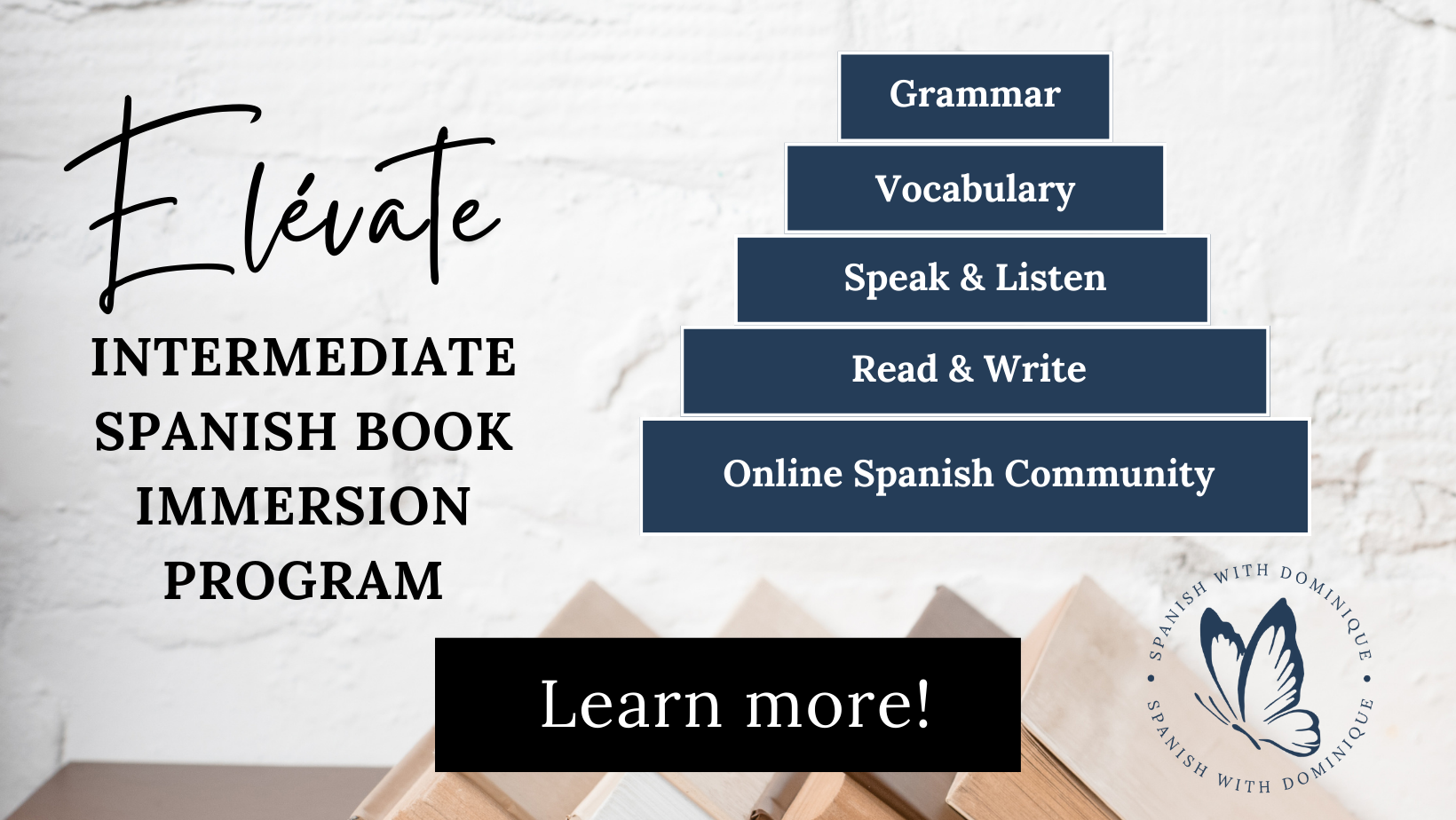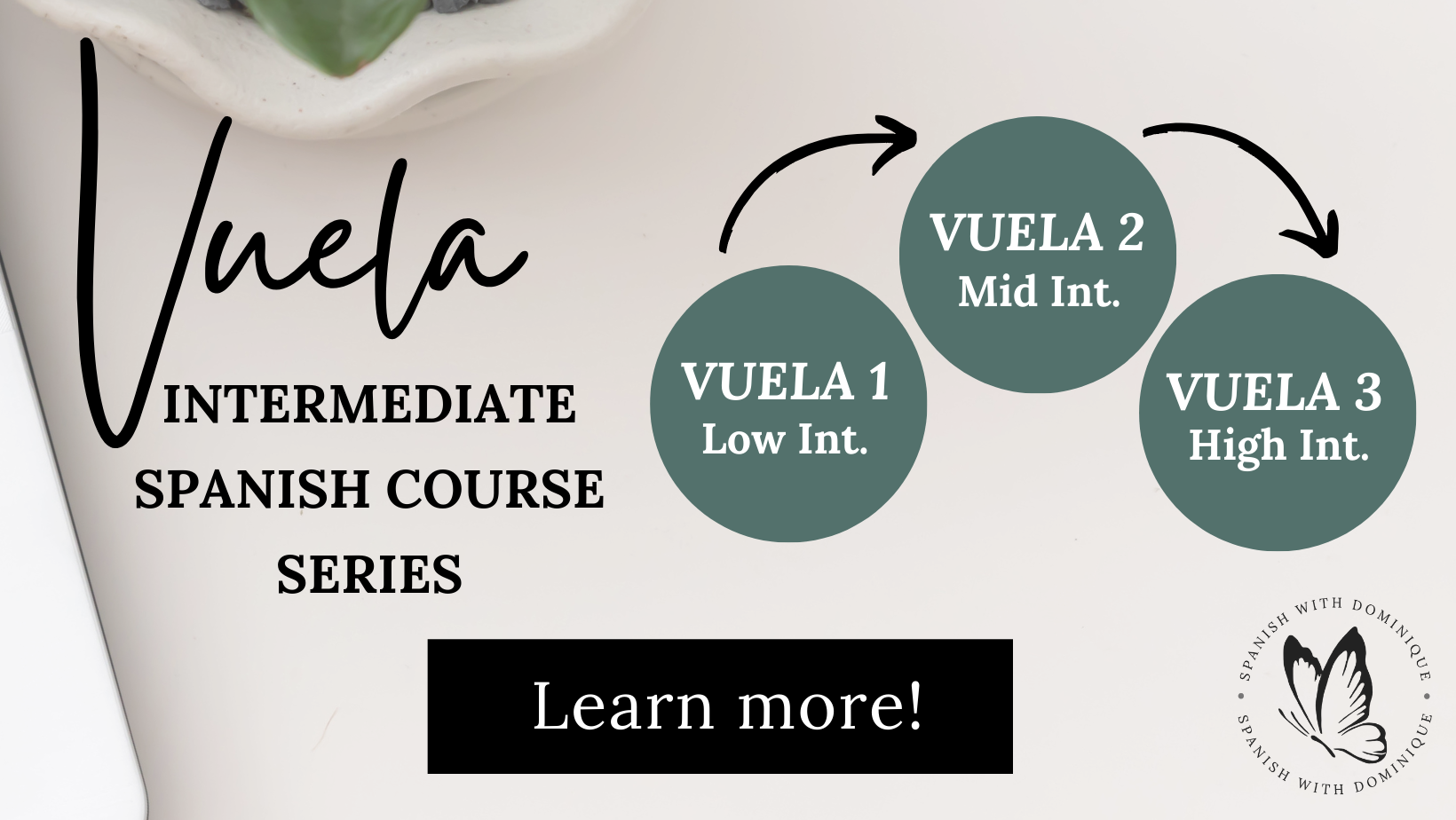6 Reasons Why the Subjunctive is the Hardest Concept to Master in Spanish
In this post: Why the Spanish subjunctive is the hardest concept to master in Spanish and the best methods to learn it.
The Spanish subjunctive - ugh.
If you’ve spent any time learning Spanish, you are bound to have heard this mystical word uttered in your Spanish classes. Just the word itself makes it seem like a far-off world full of magic and mystery that only the brave embark on.
In all honesty, learning the subjunctive can feel overwhelming. And rightfully so! With its various rules, uses, and conjugations that have no rhyme or reason when translating to English, learning the subjunctive can make any Spanish learner want to give up on the language.
In this post, we will dive into what makes the subjunctive so complicated, as well as some strategies to master it quickly.
While reading this post, consider these questions:
If you haven’t started learning the subjunctive yet, how can you be realistic and prepare yourself mentally before jumping in?
If you’ve hit a roadblock with the subjunctive, how can you refocus on the basics? What are the absolute essentials you need to get by with it in spoken Spanish?
What’s going to be your strategy for learning it? Will you be using books and YouTube to teach yourself, or are you going to invest in some professional guidance from an instructor to help you learn it faster?
6 reasons why mastering the Spanish subjunctive continues to frustrate, perplex, and confuse Spanish learners across the world
#1 It’s a mood, not a tense
Yes, that’s right. There are three moods in Spanish - the indicative, the subjunctive, and the imperative.
Under each mood falls various tenses. For example, under the Spanish indicative mood, we have tenses like the present, present perfect, imperfect, and preterit.
Equally, under the Spanish subjunctive mood, we have the present subjunctive, present perfect subjunctive, imperfect subjunctive, and past perfect subjunctive.
So, basically, when you embark on the “subjunctive” you are not just signing up to learn one tense, but various.
Keep in mind, though, that not all subjunctive tenses are created equal. There are several that you will use more than others, which is why you should master those first.
My advice? Get a good grasp on the present and present perfect subjunctive before layering in the imperfect subjunctive and other past perfect tenses.
#2 The English subjunctive is rarely used
The English subjunctive is a relatively rare verb form that expresses something desired or imagined (i.e., I insist that he come).
In other words, the subjunctive isn’t used nearly as much in English as it is in Spanish, which means that, it will, unfortunately, never come naturally to us angloparlantes. It’s just something that we have to memorize and practice extensively.
#3 It’s not an obscure grammar topic; it’s used all the time in everyday Spanish
Although the subjunctive may seem like an obscure concept for advanced, C1-level Spanish students, it’s actually not.
The present, present perfect, and imperfect subjunctive tenses are all used frequently in everyday spoken Spanish. So, unfortunately, if you’re serious about achieving fluency in Spanish (i.e., an intermediate B1 or B2 level), it is a bridge that you will have to cross, eventually.
#4 It’s triggered by the first half of the sentence
Here is where the memorization comes in.
The use of the subjunctive in the second half of the sentence (or the independent clause) is always triggered by the first half of the sentence (or the dependent clause).
So, it’s not enough to memorize the funky subjunctive conjugations. You also have to commit to memory what expressions trigger the conjugation into the subjunctive.
#5 There are lots of rules and exceptions
Once you think you’ve mastered the subjunctive, all of a sudden, a sentence throws you a curve ball, and you spiral into a fit of rage, “Why the heck is THAT subjunctive?!?!” Or, at least, that’s what happened to me when I was elbow-deep in this stuff.
My advice? Give yourself about 6 months to be able to attack learning the subjunctive in short 4-6 week sprints, and then take a break, so you don’t lose your sanity.
#6 Within the subjunctive mood, there are 4 more tenses to learn
Once you’ve mastered the use of the subjunctive, there are four new tenses complete with new conjugations to learn.
Those tenses are:
The present subjunctive
Quiero que vengas. → I want you to come.
The present perfect
Me alegro de que hayas venido. → I’m so happy you came.
The imperfect subjunctive
Me gustaría que vinieras. → I would like you to come.
The past perfect subjunctive
Me habría gustado que hubieras venido. → I would have liked for you to (have) come.
Although some of these, like the past perfect subjunctive tense, are used less frequently in spoken Spanish, they are still tenses that you should at least be “familiar with” if you want to move to a higher level.
So, what’s the best way to go about tackling the Spanish subjunctive?
How to learn the Spanish subjunctive?
The best way to learn the subjunctive is to, first, forget English translations.
Second, memorize trigger phrases (i.e. esperar que, querer que, es importante que etc.)
Third, accept that the subjunctive is just a bunch of formulas to help take the guesswork out of it.
For example:
present indicative trigger phrase + que + present subjunctive OR present perfect subjunctive
past indicative trigger phrase + que + imperfect subjunctive OR past perfect subjunctive
See, easy peasy!
Do you need help learning or perfecting the Spanish subjunctive?
Speaking from personal experience from learning the subjunctive as a native English speaker, it was definitely not something I could have taught myself from a book or YouTube.
It took me about three focused months with a teacher in Spain to, not only understand the subjunctive, but to use it fluently. That being said, I, hands-down, believe that the fastest track to mastering this topic is with the help of a supportive, patient instructor who can break things down for you (and be a shoulder to cry on when you’re feeling especially frustrated!)
If you are new to the subjunctive and are ready to dive in, reach out to me directly via my contact page, and we can set up 4-8 weeks of focused study to tackle the Spanish subjunctive together.
In my 1:1 coaching sessions, we review the subjunctive from the ground up, so you have a good base and understanding of the concept to springboard you to the next level.
Whether you are in the midst of your subjunctive struggle or are standing looking up at the big subjunctive mountain, don’t be afraid - the hardest part is always **taking the first step.
More Posts Handpicked Just For You!
Enjoyed this post? Here are some more you might like.






